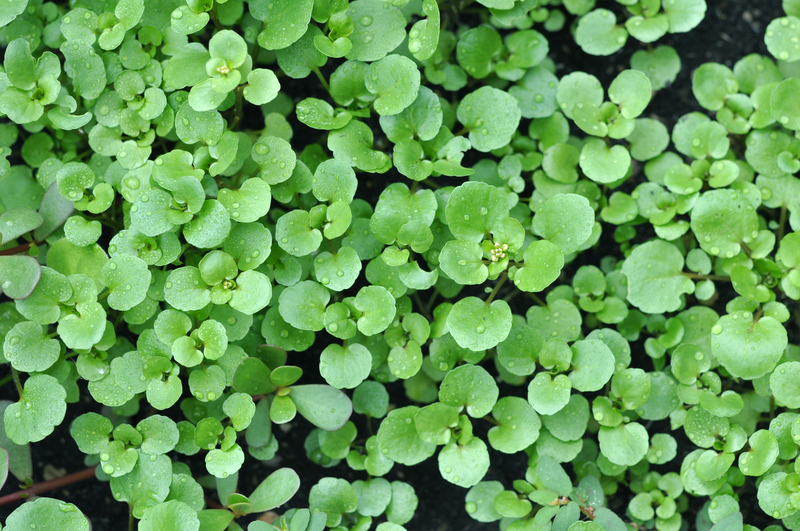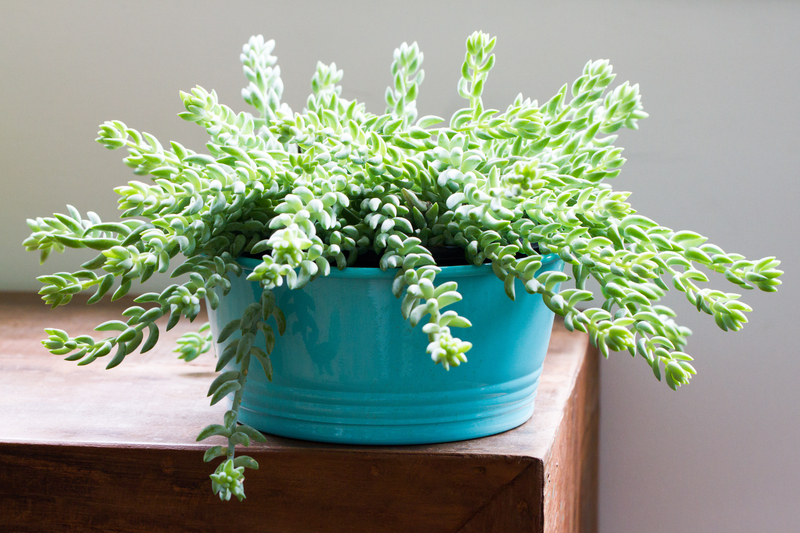Rooted Out Ways to Permanently Remove Tree Stumps from Your Property
Are unsightly tree stumps taking up precious space in your garden? If so, you're not alone. Tree stumps can be a stubborn, unwanted addition to any property, harming curb appeal, making mowing difficult, and even becoming breeding grounds for pests. Whether left after cutting down a tree for safety, aesthetics, or landscaping purposes, removing the stump entirely is important. But what are the best, most effective methods to permanently remove tree stumps from your property?
In this comprehensive guide, we'll root out and explore several permanent tree stump removal techniques. By the end, you'll know which methods suit your situation, how to execute them effectively, and which professional or DIY approach is right for you. Let's dig in!

Why Remove Tree Stumps Permanently?
Leaving tree stumps to rot in your yard may seem harmless, but they can cause a variety of problems, including:
- Pest infestation: Decaying wood attracts termites, ants, beetles, and even snakes.
- Disease spread: Fungi and pathogens thrive in dead wood and may infect healthy plants.
- Safety hazards: Stumps are tripping risks for children, pets, and lawn equipment.
- Aesthetic downside: Leftover stumps are unsightly and lower the value of your property.
- Regrowth: Some stumps sprout new shoots, causing persistent issues.
Permanently removing tree stumps ensures these problems don't linger, allowing you to reclaim your yard for landscaping, gardening, or other projects. Now let's look at the most effective rooted-out solutions for permanent stump elimination.
Manual Stump Removal Techniques
1. Digging by Hand
For smaller stumps or those with shallow roots, traditional manual removal is a feasible option. Here's how:
- Gather the right tools: You'll need a shovel, mattock, grub hoe, pruning saw, and sturdy gloves.
- Clear the area: Remove grass, rocks, and debris around the stump for an easier worksite.
- Dig around the stump: Use a shovel and mattock to expose the root system.
- Cut the roots: Once exposed, sever the largest roots using your pruning saw or an axe.
- Rock and loosen the stump: Pry the stump loose by rocking it back and forth; dig out more soil as needed.
- Pull out the stump: Once loosened, lift the stump out. For large stumps, enlist friends or use a heavy-duty strap and vehicle for leverage.
Pros: Immediate, chemical-free, and cost-effective for small stumps.
Cons: Labor-intensive and time-consuming, especially for large or deep-rooted trees.
2. Using a Tree Winch
Tree stump winching involves attaching a cable or chain to the stump and using a manual or powered winch to pull it out.
- Attach the winch securely to the stump and an anchor point (another tree or a truck).
- Operate the winch according to the manufacturer's instructions, slowly pulling the stump free.
*This method is best suited for medium-sized stumps after some digging and root cutting.*
Mechanical and Power Methods for Complete Stump Removal
1. Stump Grinding
One of the most popular, permanent solutions is stump grinding. This requires a specialized machine that shreds the stump into wood chips, several inches below ground level.
- Stump grinder machines can be rented or operated by a professional service.
- The rotating blade chews up the stump and major roots.
- Grinding can usually be completed within a couple of hours.
- Wood chips left behind make excellent mulch or can be hauled away.
Pros: Fast, efficient, and safe for all sizes of stumps.
Cons: Machines can be costly to rent or hire; doesn't remove every small root.
2. Heavy Machinery Extraction
For truly massive or numerous stumps, construction equipment like a backhoe or excavator is unmatched.
- Best for construction sites or large properties with multiple stumps.
- Able to dig up enormous root systems with ease.
Note: This is not a DIY method unless you are licensed and trained in operating such equipment. Consider the damage to landscaping or soil compaction as well.
Chemical Tree Stump Removal Solutions
1. Chemical Rot Accelerators
Commercial chemical stump removers typically contain potassium nitrate or similar compounds, speeding up decomposition.
- Drill multiple deep holes into the top and sides of the stump.
- Pour the recommended amount of chemical powder or granules into each hole.
- Add water to activate the chemicals and begin the process.
- Wait several weeks to months for the stump to soften and rot.
- Finish by breaking apart the softened wood with a shovel or axe.
*Always follow product safety instructions, and keep pets and children away from treated stumps.*
Pros: Minimal labor required.
Cons: Slow (weeks or months needed), and certain chemicals may harm the environment if misapplied.
2. Epsom Salt for Natural Stump Decay
For an eco-friendly, safe alternative, use Epsom Salt (magnesium sulfate) to desiccate and kill the stump.
- Drill holes into the stump, just as you would for chemical removers.
- Fill the holes with Epsom salt, add water, and cover with a tarp to retain moisture.
- Repeat monthly until the stump decomposes (can take several months to a year).
Pros: Inexpensive, non-toxic, and widely available.
Cons: Slow, requires patience for complete decomposition.
Burning: The Heated Approach to Tree Stump Removal
1. Controlled Stump Burning
Burning tree stumps is one of the oldest means for getting rid of them. Check with your local authorities for burn permits and fire regulations before attempting this method.
- Drill holes into the stump to allow for better oxygen flow and fuel penetration.
- Soak the stump with kerosene (never use gasoline) and let it absorb for 24+ hours.
- Light the stump and monitor the burn closely. Keep safety equipment on hand.
- Let the stump smolder until it is reduced to ash, then cover the hole with soil.
Pros: Effective for dry, old stumps; relatively quick.
Cons: Not suitable for all neighborhoods, risk of fire, and may not work for wet/green wood.
Natural and Organic Ways to Permanently Kill a Tree Stump
If you want to avoid chemicals and heavy labor, consider these organic stump removal approaches to hasten natural decay:
- Use compost or manure: Cover the stump with rich organic material and keep moist to foster decomposition by fungi and bacteria.
- Apply high-nitrogen fertilizer: Speed up the microbial breakdown of wood fibers by applying fertilizer to drilled holes and the surrounding soil.
- Cardboard and tarp: Blocking sunlight by tarping promotes rot and prevents sprouting.
- Mushroom inoculation: Certain edible fungi (like oyster mushrooms) thrive on decaying wood and can be introduced to help break down the stump.
*These natural decomposing methods require patience, as full decay may take over a year, but they're safe and environmentally gentle.*
How to Choose the Best Tree Stump Removal Solution
Selecting the right approach for permanently removing tree stumps depends on your unique situation. Consider these factors:
- Stump Size & Wood Type: Hardwoods rot slowly and are harder to dig or grind out. Larger stumps require more robust methods.
- Root System: Some trees have deep or wide root systems that make manual removal impractical.
- Budget: Renting heavy equipment or hiring professionals incurs costs, while DIY methods can save money.
- Time Frame: Do you need the stump gone immediately, or are you willing to wait months for natural or chemical decay?
- Environmental Concerns: Opt for natural or organic solutions if you're concerned about chemical residues.
- Access & Space: Consider if you have room for machinery or if tight areas require a more surgical approach.
Tip: If you have multiple stumps, a combined approach--such as grinding for large stumps and natural decay for smaller ones--might be most efficient.
DIY vs. Professional Stump Removal Services
When to Do It Yourself
- Small to medium stumps of soft or moderately decayed wood
- Safe, accessible space for hand tools
- Budget-friendly approach is needed
- You have ample time and physical ability
When to Call in the Experts
- Large, mature tree stumps (especially those near structures, utilities, or in hard soil)
- Complex root systems or multiple stumps
- Limited time or physical capability
- Need for high quality, rapid, and fully insured removal
Many local arborists or landscaping companies offer full-service tree stump grinding and removal with guaranteed results. Getting a few quotes will help you weigh cost vs. convenience.
Preventing Future Stump Problems
Eliminating tree stumps from your property is only half the battle. Here's how to prevent new stumps from causing issues:
- Remove stumps promptly after tree cutting, before pests and rot set in.
- Avoid planting problem trees (like willows or poplars) near structures or hardscapes.
- Consult an arborist before large-scale tree cutting to ensure optimal removal plans.

Frequently Asked Questions (FAQ) - Rooted Out Stump Removal Solutions
How long does it take for a tree stump to naturally decay?
Depending on wood type and size, natural decay may take 3-10 years. Using compost, mulch, or accelerating agents can cut the decay period short--sometimes to just a year or two.
Is it okay to leave a stump in the ground if it's not in the way?
While not strictly necessary, any leftover stump attracts pests, may harbor disease, and could eventually cause regrowth or other problems. If you value easy maintenance and safety, permanently removing old stumps is best.
Can I plant another tree in the same spot after removing a stump?
Yes, but be sure all roots and wood chips are removed, and replenish the soil with fresh topsoil and organic matter. Grinding tends to leave fewer complications than chemical removers or burning.
Conclusion: Taking Back Your Landscape
Unwanted tree stumps don't have to be a permanent blight on your landscape. From manual digging and winching to chemical solutions, stump grinding, burning, and natural decay, there are rooted out ways to permanently remove tree stumps from your property that fit every timeline, budget, and environmental preference.
For immediate, hassle-free results, professional stump removal companies offer the speed and thoroughness needed for stubborn or dangerous stumps. However, with the right know-how, tools, and patience, DIY stump removal is very achievable for many homeowners.
Take back your yard, protect your property, and enhance your curb appeal with the right permanent tree stump removal strategy for your needs. Your dream landscape is just a rooted-out stump away!